Tanzherbst - Internationale Solonacht
Dresden, November 2007
Irene Schröder: Der traurige Nachgeschmack der Erinnerung
On a large video screen the dancer slowly writes characters onto a transparent foil wrapped around her body. The piece consists of series of poses of a varying length, some as short as a flash, other kept for several seconds. The poses are repeated in a fixed order while the dancer slowly moves within an enlightened rectangle. The choreograph wrote that her piece was about an image of oneself, created as a response to expectations and setbacks, and about the question whether this kind of image provides us with protection or rather imposes restrictions.
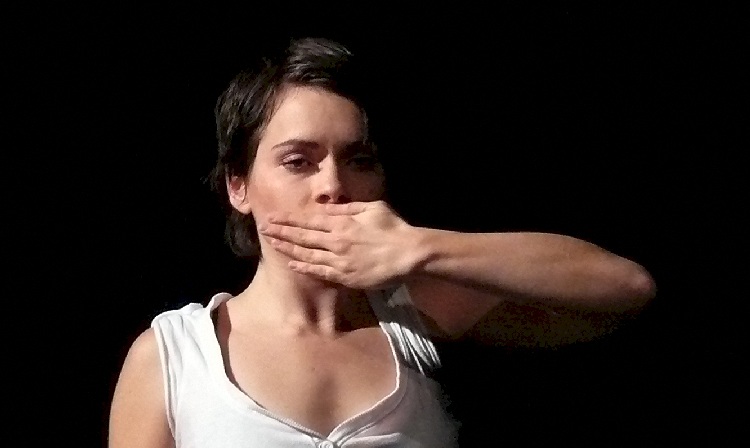
Gradually, the rigid sequence loosens up and variations creep in. The series of movement is enriched by new elements here and there, a slow part of the series is suddenly executed at a high speed. Eventually everything breaks up, the dancer abandons the self-imposed image and engages in floor work. For a while she even withdraws from the performance, sitting on the floor at the back of the stage.
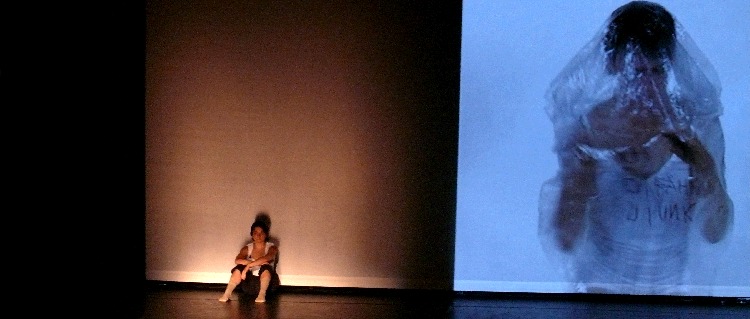
But the period of freedom does not last for long. The stereotype comes back, persistently declaring who the protagonist is and to where she goes.
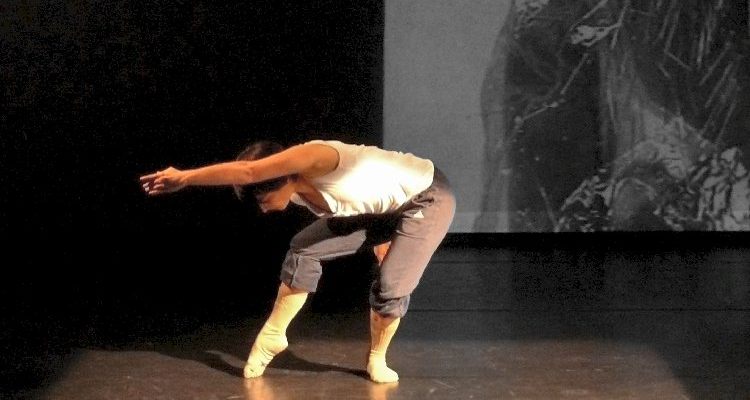
I very much enjoyed the precise structure of the piece with each element thoughtfully placed and the way how erosion, destruction and restoration of a routine was implemented. Together with Raffaella Galdi's "Modes of Locomotion", this was my favorite for the Award of the Audience, followed by Magali Sander Fett (who actually won the award).
Raffaella Galdi: Modes of Locomotion
Raffaella Galdi's theme is locomotion. She starts on the floor exercising rudimentary worm-like movements. Gradually she develops more complicated schemes, arranged in circles, while her center of gravity continuously shifts upwards as she moves from the right to the left part of the stage. I was amazed that it is still possible to invent new movements that are as unusual and beautiful as the circles in the middle part of the piece.
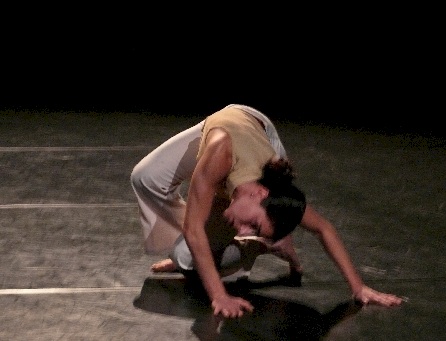
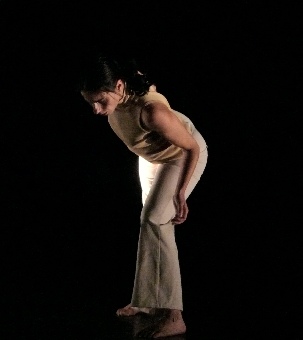
The photo below depicts the final scene. The dancer went to a distant edge of the stage and paused there. Illuminated with contrasting, cold light from the back, she stood motionless with her left hand pushed into the trousers (one could hardly recognize this detail from the distance) and the face turned upwards. What did the pose say and how was it related to locomotion? I offer two guesses. Firstly, I recall the video Prostyje Dvizhenja by Tatu (forgive me for this association, Ms. Galdi!). Since you are reading this report, it is highly unlikely that you know Russian pop-singer girl duet Tatu. The introductory part of their video Prostye Dvizheniya (Simple Moves) is a collage of old s/w recordings which draw parallels among diverse periodical movements to serve as an introduction...

Well, the association above was far-fetched. I offer another one: In the final scene the dancer's body reaches its highest point as the evolution of the movement culminates. The gaze of the dancer, however, shows that this is not the end. There is more, further ahead and higher, out of the reach by locomotion, possibly even out of the reach of material and physical.
Isabelle Schad: Ohne Worte
Isabelle Schad's piece was part of a her investigation of the effect of movement on mood. In the first part the dancer was running forth and back while waving her arms asynchronously in large distorted circles. The movement recalled butterflies, aerobics or just madness, depending on your receptivity. Reading the text helps to understand that it was intended to trigger joy and relish. This supposedly worked out for the dancer, but I doubt that it did the same for the audience. The second part of the piece was very intellectual and self-centered. The dancer was lifting imaginary objects and carrying them around and there was a mystical connection with the space outside the stage. As the movement served to convey a message but did not have enough substance in its own and the message remained incomprehensible, the piece can be viewed as an experiment at best.
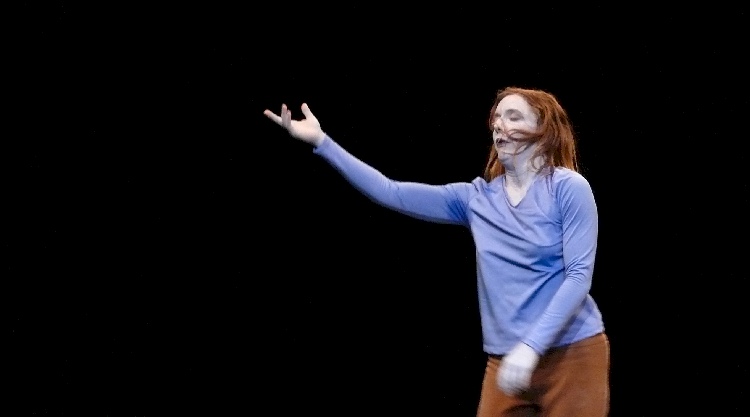
Evie Demetriou: Lass es kommen / Lass es gehen
Heavy soundtracks extracted from video games, mixed live on stage by Michel Phiala, accompanied Evi Demetriou's performance. Her dance was as hard as the sound. The opening scene with her shy appearance in a black mini-skirt and stockings (photo below right) raised utterly wrong expectations; merely her knee support pointed to the right direction, if anyone could notice them in the dim light. The performance consisted of alternating phases of clashes of the dancer's body with the floor surface and "pauses", in which the sound went off and the dancer was recovering, examining her pretended injuries and groaning from pain. Then the sound terminating the recovery phase turned the performer into a robot again. Only her silhouette could be seen against the yellow and orange background (photo below left). I suppose that most of the sound seemingly caused by her body crashing onto the ground was generated deliberately by her feet and hands hitting the floor, in the same way as stuntmen and bogus catch-as-you-can fighters do. With the advancement of the piece the groaning of the performer grew stronger, provoking laughter from the audience. I saw this parody as a tough-guy translation of the relax/contract stereotype, while the text provided by the dancer indicated that she was inspired by video games and (supposedly) their invulnerable heroes.
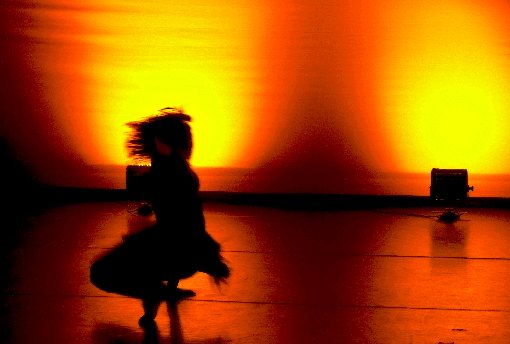
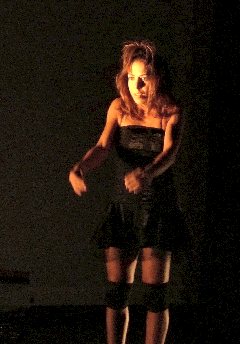
Magali Sander Fett: VegeTable
or: What is Barby doing at Speaker’s Corner?
Magali Sander Fett presented a dance with theatrical elements, but the latter were sprinkled so sparingly that you would hesitate calling it dance theatre, in spite of her marvellous facial expressions. The whole piece took place on, around and (for a couple of seconds) even inside a speaker's pedestal covered with a black cloth, which the opening scene unequiovocally placed into the US political scene. The choreography was intelligent and entertaining. Although the piece was not my choice for the Award of the Audience (I would have voted for Schröder or Galdi), the award was definitely not misplaced.
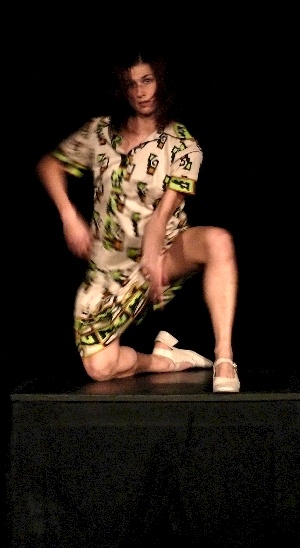
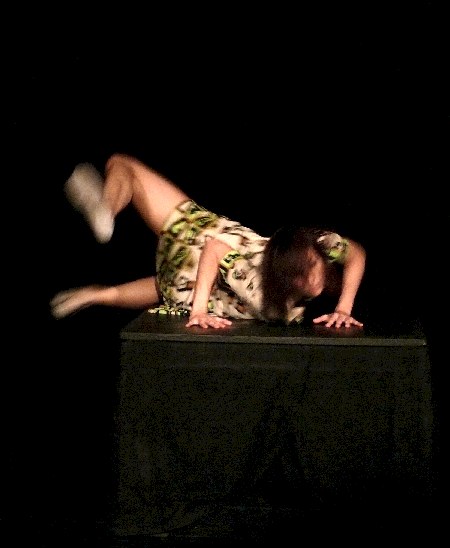
Petr Karlovsky